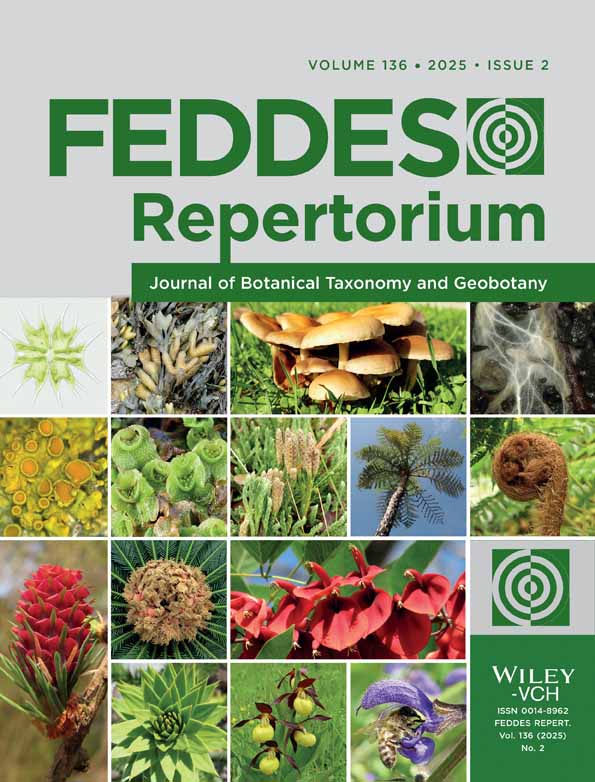Stem mechanics, functional anatomy and ecology of Alnus viridisand Alnus glutinosa
Abstract
enMechanical properties, the internal stem structure and the wood anatomy of stems of Alnus glutinosa from the Black Forest and of two populations of Alnus viridis from the Black Forest and from the Swiss Alps are compared as to their ecological significance. The mechanical bending properties are characterised by the parameters “flexural stiffness” (E struct · I ax) and “structural modulus of elasticity” (E struct). The structural modulus of elasticity increases significantly for all three populations during the first years of growth and becomes approximately constant in stems being five years old and older. These ontogenetic variations of the bending mechanical properties are affected by changes of the internal stem structure, i.e. by changes of the amount and distribution of plant tissues with different mechanical properties within the cross section, described by the axial second moment of area (I ax) which weights the position of the tissues by their distance to the neutral plane. The contribution of bending-stiff wood towards the axial second moment of area increases during the first years of growth whereas the contribution of the more bending flexible bark decreases. With further increasing age, i.e. in five years old and older stems, the distribution of tissues remains approximately constant as do the mechanical properties. Comparing the different species or populations, respectively, the interspecific difference between A. glutinosa and A. viridis from the same regional origin (Black Forest) are much smaller than the intraspecific differences between the two A. viridis populations from the Black Forest and from the Alps. Significant differences between the two species from the Black Forest are only found in the structural modulus of elasticity of 5–7 year old stems. In contrary, in most ontogenetic stages significant differences are found in all tested mechanical and anatomical parameters between A. viridis from the Black Forest and A. viridis from the Alps. The differences may be due to the different environmental conditions in high elevated sites in the Alps compared to lower sites in the Black Forest. However, the observed differences may also originate from a genetic differentiation into two different ecotypes in A. viridis.
Abstract
deStamm-Mechanik, funktionale Anatomie und Ökologie von Alnus viridis und Alnus gluti-nosa
Die vorliegende Untersuchung vergleicht die mechanischen Eigenschaften, den Stammaufbau und die Holzanatomie von Alnus glutinosa aus dem Schwarzwald und von zwei Alnus viridis Populationen aus dem Schwarzwald und den Schweizer Alpen hinsichtlich ihrer Bedeutung für die Ökologie dieser Arten. Die biegemechanischen Eigenschaften von Stammabschnitten werden durch Biegesteifigkeit (E struct · I ax) und strukturelles Biegeelastizitätsmodul (E struct) charakterisiert. Das strukturelle Biegeelastizitätsmodul steigt in den ersten Entwicklungsjahren in den untersuchten Stämmen aller drei Populationen zunächst deutlich an, bleibt dann aber bei 5-jährigen und älteren Achsen mit weiter zunehmendem Alter mehr oder weniger konstant. Diese ontogenetische Veränderung der mechanischen Eigenschaften wird durch Veränderungen im anatomischen Stammaufbau hervorgerufen, genauer gesagt durch eine Veränderung der Anteile biegefester und weniger biegefester Gewebe im Stammquerschnitt, respektive am axialen Flächenträgheitsmoment (I ax). Das axiale Flächenträgheitsmoment einer Achse berücksichtigt nicht nur die Flächenanteile der Gewebe im Querschnitt, sondern gewichtet auch deren Form und Position mit ihrem Abstand zu der neutralen Ebene. Der Anteil von steifem Holz am axialen Flächenträgheitsmoment nimmt bei allen untersuchten Populationen während der ersten Jahre mit dem Alter signifikant zu, während der Anteil von biegeflexibler Rinde im Gegensatz dazu abnimmt. Bei 5-jährigen und älteren Achsen hingegen bleibt das Verhältnis zwischen Holz und Rinde mehr oder weniger konstant, was sich auch in einem annähernd konstanten strukturellen Biegeelastizitätsmodul widerspiegelt.
Beim interspezifischen Vergleich der Alnus -Arten aus dem Schwarzwald ergaben sich, abgesehen vom strukturellen Biegeelastizitätsmodul bei 5–7-jährigen Achsen, keine signifikanten Unterschiede zwischen Schwarz-Erle und Grün-Erle. Im intraspezifischen Vergleich zwischen A. viridis -Populationen aus Schwarzwald und Alpen hingegen zeigten sich in fast allen untersuchten Ontogeniestadien signifikante Unterschiede sowohl hinsichtlich der mechanischen Eigenschaften als auch bezüglich der zugrundeliegenden Stammanatomie. Die Konsequenzen für die Einnischung beider Arten und die mögliche Existenz genetisch unterschiedlicher Ökotypen von Alnus viridis im Schwarzwald und den Alpen werden diskutiert.




